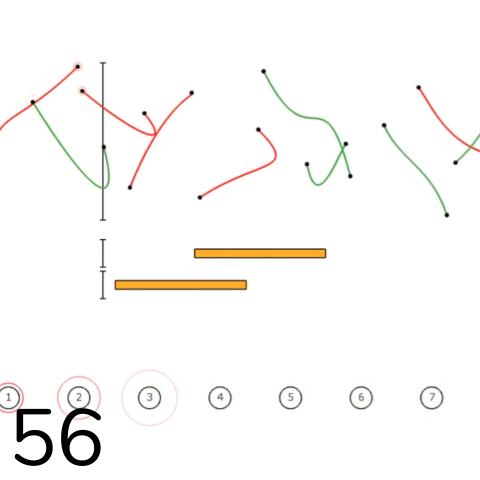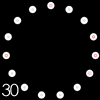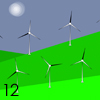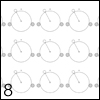Study no. 55
Performance Instructions
For a range of players.
The concept for this piece was to develop a notational approach that could clearly represent malleable phase relationships, and this is visually represented by the red lines in the background, although beyond that these red lines do not serve any notational purpose. Each version of the score contains a series of variations, beginning and ending with a fadein and fadeout respectively. Players should determine whether or not they would like to fade in or out with the score, or some other alternative.
Different versions of this score require different numbers of players, which is determined by the number of rotating circles (for example, version 1 [linked above] is for 6 players). The instrumentation for any version of this score is completely open, although percussive sounds are preferred.
Prior to performance, each player is assigned one of the rotating circles, and should follow only that circle throughout. Each performer, in consultation with the ensemble, should determine one sound that is distinct from the others. Every time each player's respective rotating circle crosses the node at 12 o'clock, they should play their sound. One variation on this is for each player to have 4 distinct sounds that they rotate through, preserving the order of these sounds throughout. Despite which approach the ensemble decides to take, each sound should be fairly short, and each time it is repeated, should be near-identical to the last time it was played. Furthermore, short melodic fragments, etc., do not work well with this piece. By using short, distinct sounds, the shifting phase relationships between players becomes far more perceptible. Despite the fact that each version of the score contains some number of variations, the sounds used between variations should stay the same. However, it may be possible to assign different groups of 1 or 4 musical events to each player for each variation.
Ryan Ross Smith, 2016
If you would like a copy of this animated score for performance, or have any questions about the animated notation used in this piece, feel free to get in touch! My contact information can be found here.




